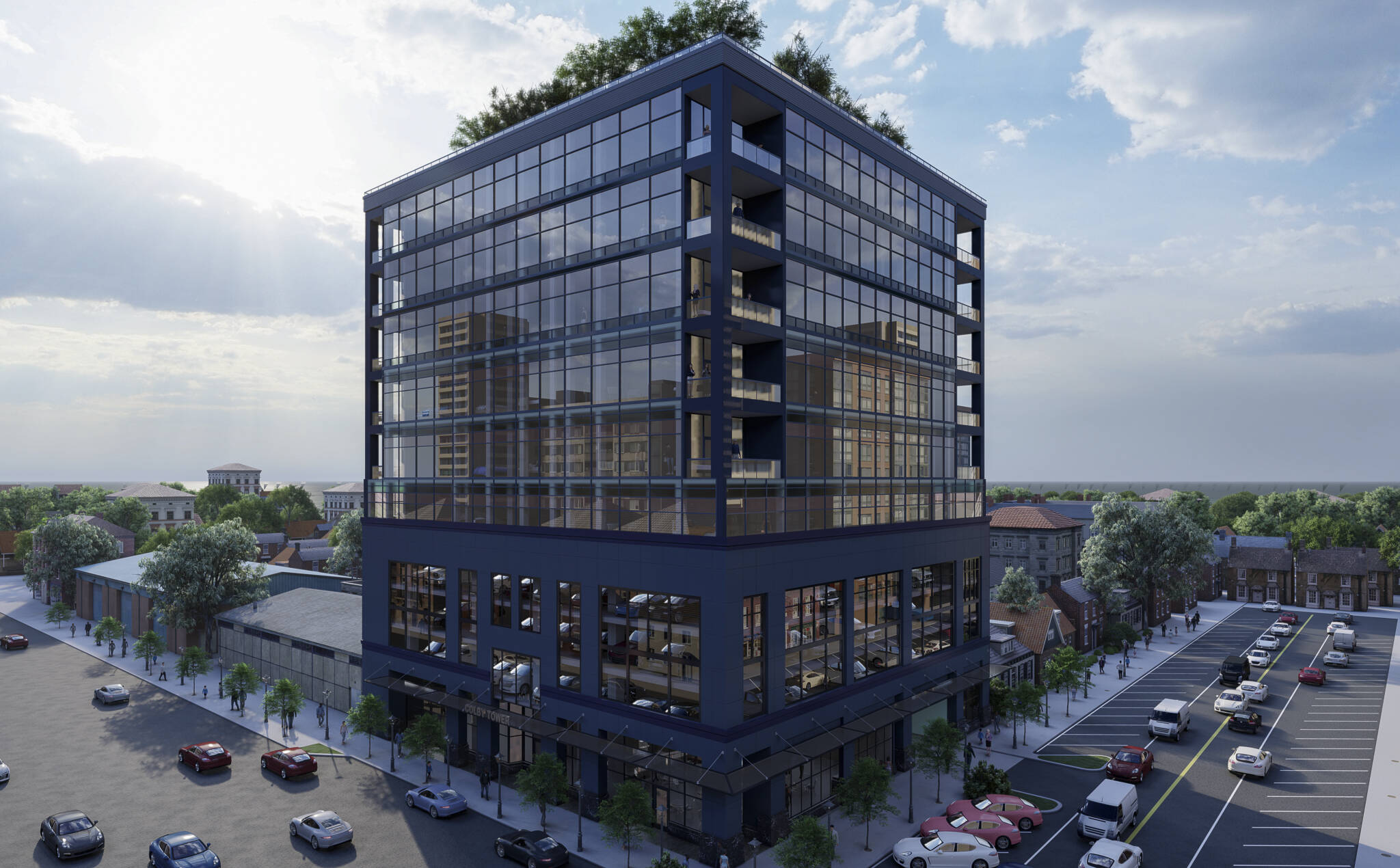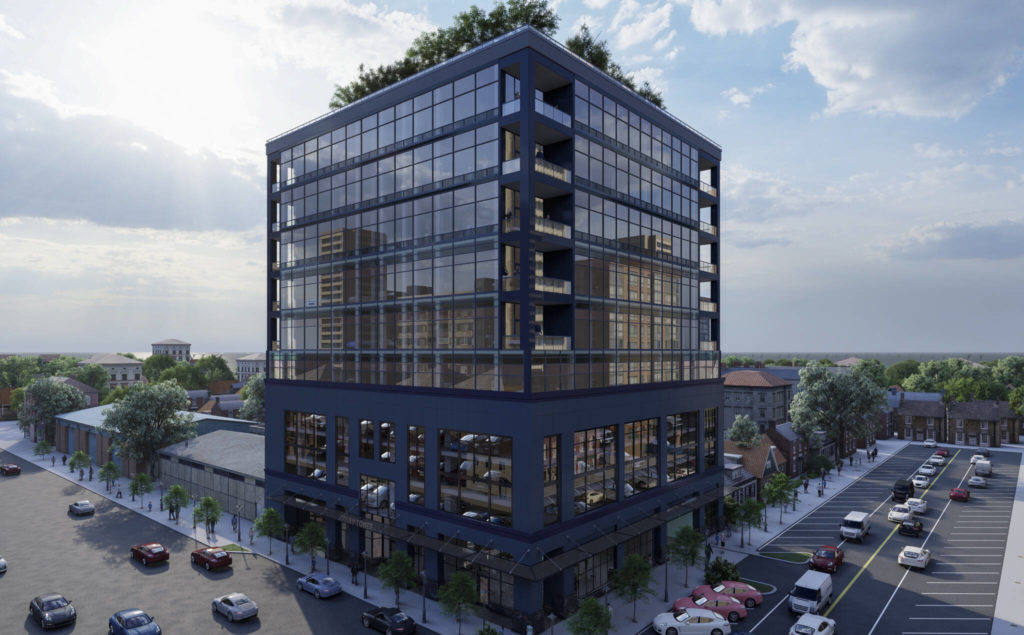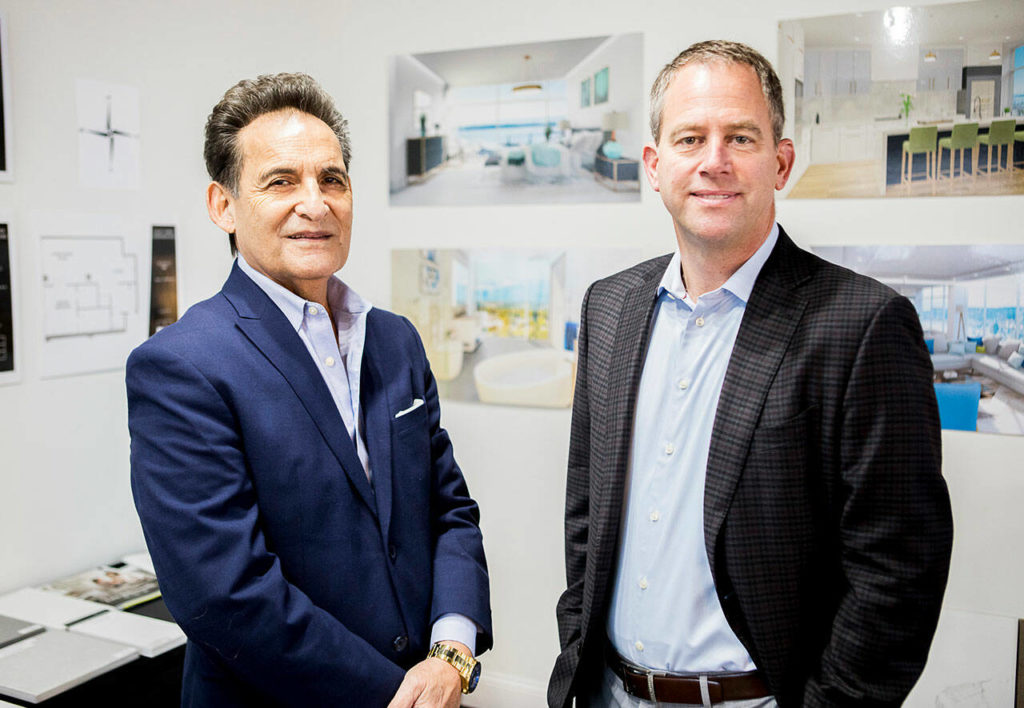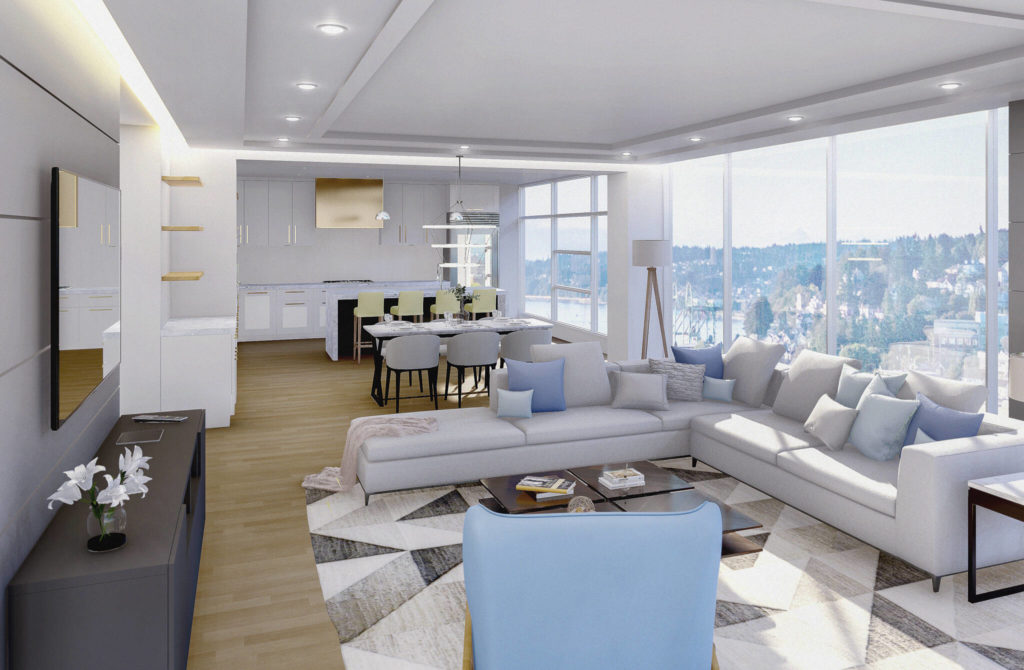EVERETT — In the past year or so, one apartment building after another has sprung up in Everett, adding hundreds of new units.
Kinect @ Broadway, the Marquee Apartments, Waterfront Place Apartments, to name a few.
More are being built.
The Nimbus, an eight-story, 165-unit apartment building is set to open this year in downtown Everett. Another 131 waterfront apartments await renters this spring at the Port of Everett.
If the current white-hot real estate market is an indicator, there are many who would rather be homeowners, not renters.
But where are the new condos?
It’s a question Stanwood resident Donald Curtis would like answered.
“All the new apartments in Everett are great for some, I guess,” Curtis said. “Many of us are seniors who can’t afford $2,500 rent a month for a place to live, but we do have a home to sell that would enable us to buy a condo.”
Condominiums can be an affordable housing option for first-time buyers and empty nesters who want to downsize. They can help ease the region’s overall housing shortage and cut down on sprawl, said Mike Pattison, a regional manager with the Master Builders Association of King and Snohomish Counties, a non-profit trade group.
Yet they’ve disappeared from much of the construction landscape.
From 1970 to 2009, condos sprouted up across Snohomish, King and Pierce counties. Some 25,000 were built in the region each decade, according to the U.S. Census Bureau’s American Housing Survey.
Then came the drop-off. From 2010 to 2015, the tri-county area added just 4,400 new condos, according to a Master Builders report.
Developers throughout Washington began to think twice about building affordable or market-rate condominiums. A state law aimed at protecting condo owners ignited a flurry of questionable lawsuits against condo developers, causing insurance premiums for builders to skyrocket.
Suddenly, condos became a higher liability risk than single-family homes or apartments. Developers viewed condo construction as risky, Pattison said.
In 2019, state legislators rewrote the law, hoping to boost condo construction.
“It’s a little too early see if the law is effective,” Pattison said.
Colby Tower, a proposed 32-unit condominium project in downtown Everett, could test the local waters. If the project gets off the ground, developers may closely monitor its progress and gauge whether it’s worthwhile to build condos again — including market-rate and affordable units.
Eight nails instead of nine
The Great Recession and housing crisis put a damper on condo construction, but the decline had been happening before the economic downturn of 2008.
The saga begins with the 1989 Washington Condominium Act, aimed at protecting new condominium owners against construction defects.
While consumer protections were needed, builders and trade groups contend the rules went too far, Pattison said. The Legislature later agreed.
Under the old state law, homeowners association members could be held personally and financially liable for a lack of action on construction defects, Pattison said.
The risk of a lawsuit was high, with up to 10 years to file after a condominium was built, Pattison said. As a result, he explained, many HOA boards were frightened into filing preemptive cases, fearing “they might be held liable down the line.”
Plaintiffs sometimes targeted building features that didn’t affect structural integrity.
Wall scans that revealed eight nails where there should have been nine became legitimate lawsuit fodder, Pattison said.
The insurance industry did not take the threat well.
“Insurance companies refused to offer builders risk insurance for condo projects or set premiums so high that developers abandoned their plans and built something else,” Pattison said. “Insurance rates per unit were astronomical.”
A developer might pay a similar premium on an affordable unit as an expensive unit, he said. Dollar-wise, it made sense for developers to build luxury units.
“During the dark times of condo liability, we did see some high-end condos come to market,” Pattison said, “but nothing that addressed affordable housing.”
Alarm bells
By the mid-2000s, developers faced a slew of costly and sometimes “frivolous lawsuits,” which had a chilling effect on condo development, Pattison said.
Even non-profit developers got dinged.
HomeSight, a Seattle nonprofit that develops affordable housing, like the Kokanee Creek townhomes in Everett, stopped building condos in 2009 — after being sued.
Skotdal Real Estate nixed plans from 2006 to build a 19-story office and condominium building at the corner of Hewitt and Wetmore avenues in downtown Everett. Since then, the Everett firm’s housing division has stuck to apartment construction.
“Condominium reform is essential if those kinds of projects are to ever get off the ground in a meaningful way again,” said Andrew Skotdal, president of the firm’s office and industrial division.
“You do want to insist that buildings be built to last, but not so strict they result in frivolous lawsuits,” said Everett’s planning director, Yorik Stevens-Wajda.
Developers weren’t the only ones who raised a hue and a cry.
In 2016, an independent University of Washington researcher came to a similar conclusion. In a study of the Seattle housing market, the report cited the “heightened liability for condominium builders” as a significant factor impairing the development of affordable condominiums and townhomes.
Alarm bells went off.
The condo “scarcity impedes the region’s ability to provide home ownership opportunities and meet the stated goals of the Growth Management Act,” Master Builders reported.
At the urging of developers and builders, the Legislature rewrote the condominium liability law in 2019, launching reforms intended to boost condo construction. The new law offers consumer protections against shoddy workmanship and reduces the legal exposure for HOA members.
What constitutes a construction defect is now more narrowly defined. Litigation must be for actual, rather than perceived, damages, Pattison said.
“If there is an actual problem it should be remedied, but perceived or imagined defects were just killing the condo construction industry,” he said.
In an online post, Timothy Repass, a Seattle attorney who helped draft the new law, wrote that the revisions may not “correct all of the problems we have seen over the last couple of decades with condominium defect suits, but it should help get developers and builders back on proper and more equitable footing.”
Since the revision, Pattison noted, developers have pursued building some high-end condos east of Lake Washington, for example.
Testing the waters
The proposed 10-story Colby Tower in Everett has been on the drawing board since 2007. The national financial crisis halted the project for years.
Another obstacle? An Everett zoning law governing the number of floors that could be built based on a project’s footprint. The rule would have limited the building’s height to four stories — and not enough square footage to make the project financially viable.
In 2018, the city rewrote the rule to allow taller buildings, up to 25 stories in the city’s core, if a project met specific criteria.
The planned high-rise at 2600 Colby Ave. would include 32 units, parking for residents and 8,000 square feet of street-level retail and office space.
Interest has been strong, said Dan Gunderson, a broker with Everett South Windermere Real Estate, who represents the project.
On a wet afternoon, Snohomish County Superior Court Judge Karen Moore stopped by Colby Tower’s showroom at 26th Street and Colby Avenue to check out blueprints, renderings, kitchen countertop samples and a video depicting views from each floor.
An Everett resident since 1994, Moore has watched the city evolve from “a sleepy little industrial town into a center for people who want to get out of Seattle and want quality of life.”
“I love the idea of being close to downtown,” Moore said.
Make no mistake, this is a high-end project, with an estimated $40 million cost.
Plans call for eight 2,200-square-foot penthouses to occupy the top two stories. On floors five through eight, there’s room for 16 two-bedroom units and eight one-bedroom units.
Prices range from $900,000 to $1.9 million.
There is a perk. Under a city incentive, condo owners would be exempt from property taxes for eight years.
Still, it’s “half what you’d pay for a view condo in Seattle or Bellevue,” said the property owner, Timothy Corpus, who hopes to attract buyers from the Puget Sound region and beyond. Seattle view condos can top $9 million or more.
Corpus is now taking reservations for the building’s 32 condominiums.
“If you reserve a unit, there’s no obligation to buy, but we’re trying to get people that are really serious about this,” said Gunderson, the broker.
So far, prospective tenants have reserved five of the eight penthouses, as well as two of the two-bedroom units.
“Timothy is moving forward with his financing and plans to apply for permits in the spring,” Gunderson said. “He’s very close to picking a builder.”
In a perfect world, Corpus said, construction would start this year and Colby Tower would be ready for occupancy in 2024.
‘Intestinal fortitude’
Real estate prices have soared, but condos are still a comparative bargain.
In December, the median sale price for a condo in Snohomish County was $500,000. That’s $200,000 less than the median price of a single-family home, according to the Northwest Multiple Listing Service. Year-over-year in December, Snohomish County home prices rose 22%. Condo prices spiked 37%.
“Condos continue to be swarmed by first-time buyers,” said John Deely, a member of the Northwest MLS board of directors.
Meanwhile, in Everett, port officials hope the next waterfront development will include a condo project.
“The goal is to have some type of condos or townhomes on the waterfront,” said Lisa Lefeber, Port of Everett CEO.
But “we haven’t seen the interest or demand by developers in the condo market,” Lefeber said.
Dan Eernissee, Everett’s economic development director, said it will require developers “with a bit of intestinal fortitude to do condos.”
Time will tell if the law sparks a condominium resurgence. Condo projects usually take three to five years to complete, said Pattison of the Master Builders.
And there’s another potential sticking point.
“It’s not yet clear if builders’ insurance premiums have come down,” Pattison said.
For Curtis, the Stanwood resident, the prices at Colby Towers are out of reach.
He hopes lower-priced condos will follow.
“I’d like to see some of those,” he said.
Janice Podsada; jpodsada@heraldnet.com;
Talk to us
> Give us your news tips.
> Send us a letter to the editor.
> More Herald contact information.




























